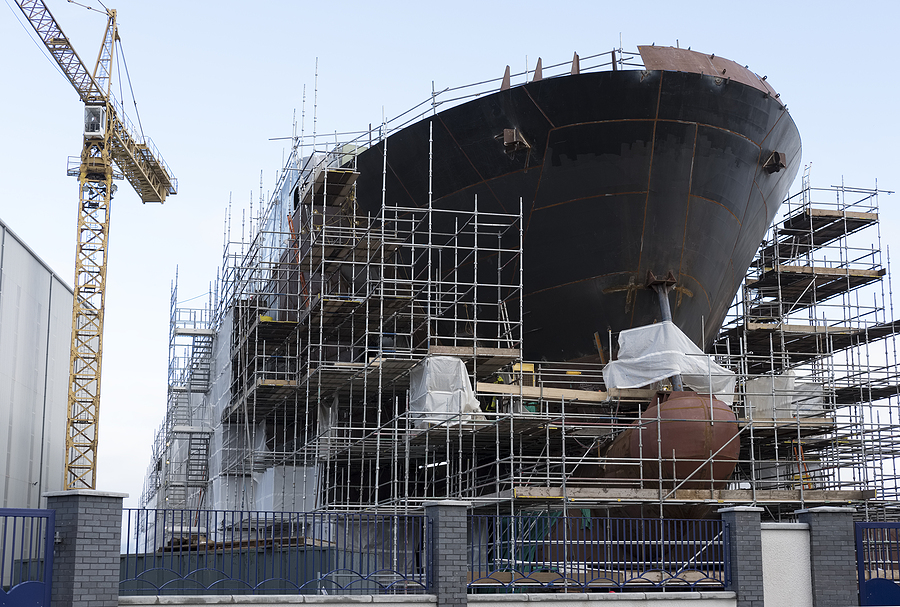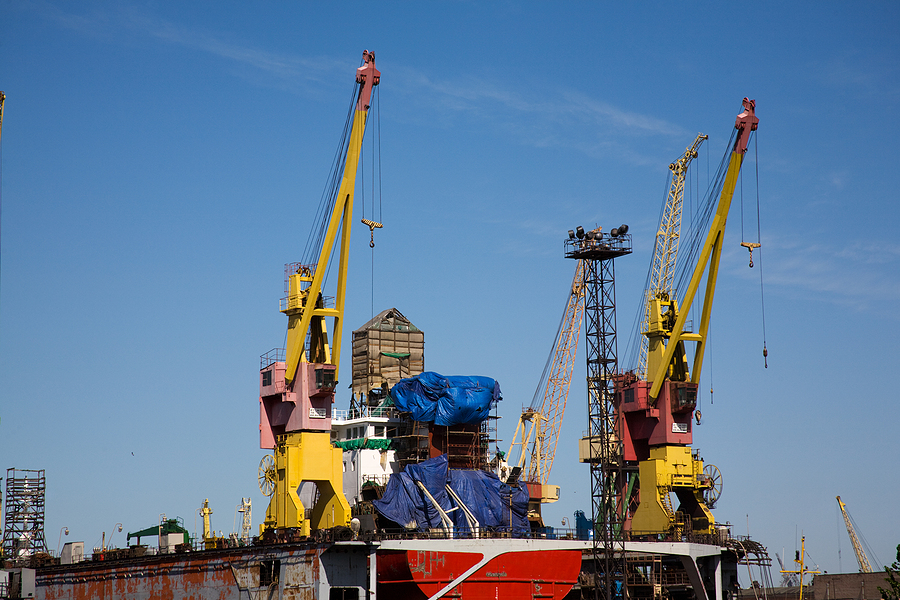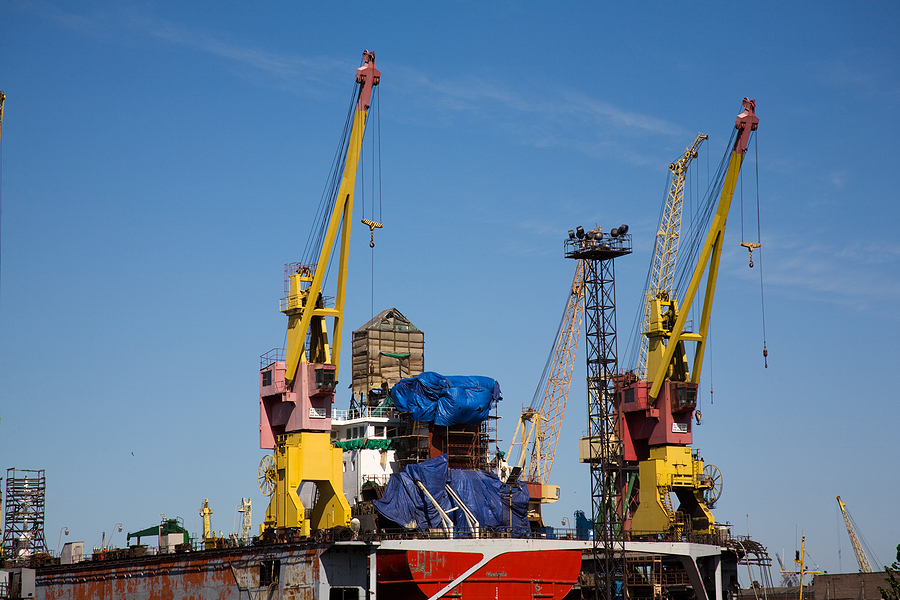Ensuring safety offshore often starts at the top—literally. When you’re operating marine cranes on platforms, vessels, or Ocean Energy installations, regular offshore crane inspections aren’t just regulatory boxes to check; they’re lifesaving procedures.
Well-maintained cranes prevent accidents, reduce downtime, and ensure compliance with critical offshore safety standards. Here’s everything you need to know about what makes these inspections so crucial.
Why Offshore Crane Inspections Matter
The Bureau of Safety and Environmental Enforcement (BSEE) categorizes lifting as one of the top incident types in offshore operations, logging 375 lifting-related events in 2023 alone. Many of these incidents stem from preventable issues such as fatigued rigging, seized slewing gear, worn brake systems, or neglected load limiters. That’s why offshore crane inspections and offshore marine crane maintenance aren’t optional. They’re essential to keeping equipment and crews safe.
Under the Outer Continental Shelf Lands Act, the BSEE’s Inspection Policy Branch mandates both annual scheduled and unscheduled checks on all offshore lifting equipment.
Annual inspections go beyond a visual walkaround; they involve detailed testing of structural components, safety systems, electrical integrity, and hydraulic performance, all governed by standards like API RP 2C and other industry protocols.
Who Does the Inspections and What Do They Check?
Inspections are typically carried out by Coast Guard-certified inspectors, BSEE offshore inspectors, or accredited third-party professionals. Here’s what their evaluations cover:
Structural Integrity
Inspectors look for corrosion along booms and slewing rings, metal cracking around welds and bolts, and any permanent distortions. Given the harsh dynamic loading at sea, steel fatigue can develop in less than ideal conditions. These inspections include non-destructive testing and load tests during commissioning or after relocations.
Load Systems & Limiters
Load sensors and articulating blocks must function flawlessly. Upper- and lower-limiter stops must activate reliably; recent guidance from the UK HSE stressed how failures in boom-limit systems can lead to catastrophic breakages.
Slewing & Braking Systems
In marine cranes, slewing drives wear considerably, especially under lateral force when high seas roll against a lift. Brakes, clutches, and sprag mechanisms are subject to wear and must be tested regularly. The HSE advises examining brake systems thoroughly to detect hidden wear in hydraulic or mechanical subsystems.
Hydraulics & Hoist Chains / Cables
Inspectors visually check hoses, cylinders, and seals, while hoist wire and chain must be measured for wear and shrinkage, usually via offshore marine crane maintenance protocols tied to record-keeping.
Inspection Frequencies and Methods
There are two primary types of inspection regimes:
Scheduled (Annual) Inspections
These are deep dives into structural, mechanical, hydraulic, electrical, and safety systems. Annual load testing, as dictated by API RP 2C, is mandatory for new, moved, or rented cranes. Records of these tests are essential, especially when cranes are transferred between platforms or vessels.
Unscheduled/Spot Inspections
These surprise checks are a vital component of BSEE’s risk-focused strategy. Between March 13–14, 2018, BSEE and USCG conducted a focused campaign across Gulf of Mexico platforms, logging over 819 inspection hours and verifying over 2,200 documents, highlighting their uncompromising compliance approach.
Best Practices for Offshore Marine Crane Maintenance
To support inspections and reduce outage risks, vessel operators should implement daily and periodic maintenance schedules:
Pre-Use Checks
Before every lift, operators must inspect safety lock pawls, lubrication status, hydraulic pressure, and cable condition. Ensuring that limit switches and emergency stops function is non-negotiable.
Routine Maintenance Cycles
Quarterly or semi-annual checks should include slewing gear refurbishment, candle-stick inspections for structural fatigue, corrosion mapping, brake pad replacements, and hose change-outs.
Dedicated Annual Maintenance
Annual shutdowns provide time for in-depth work, like diaphragm replacements, non-destructive testing on load cranes, and hydraulic accumulator servicing. These sessions also allow software updates in crane control systems.
Record & Data Management
Incorporating maintenance and inspection logs into SEMS plans (Safety & Environmental Management Systems) is a BSEE-recommended approach to elevate crane reliability.
Consequences of Poor Crane Maintenance
Neglecting maintenance has direct safety repercussions: boom collapses, dropped loads, brake failures, wire rope parts, or hydraulic leaks can cause injuries, environmental harm, or total operational shutdown.
Regulatory compliance is also affected; non-CSA or late documentation can trigger inspection delays or penalties. Under API RP 2C, failure to load-test or maintain limiters can result in immediate suspension of operations.
A Real-World Example: The Library of Lifting Hazards
Consider this: in 2023 alone, the BSEE reported 375 lifting incidents on the OCS, which include dropped loads, near-misses, or dropped objects. These incidents represent real costs—both financially and to the safety of crews. If just 10% of those were caused by neglected maintenance or worn limiters, that’s dozens of avoidable incidents, underscoring the ROI of rigorous offshore marine crane maintenance.
Setting Up a Robust Maintenance & Inspection Program
Operators can significantly reduce risk and improve reliability through seven key steps:
- Maintain a SEMS-aligned inspection schedule: Annual and surprise inspections required by BSEE combine to form a robust risk-based cycle.
- Engage certified inspectors: Whether Coast Guard-approved, USCG-affiliated, or in-house third-party inspectors, they must be credentialed for offshore use.
- Adhere to API RP 2C load testing and limiter alignment under Appendix E, ensuring safe operation before and after major moves.
- Track all records meticulously—with four-year storage for inspection, operator, and maintenance logs.
- Train maintenance personnel extensively—BSEE emphasizes competency during inspections.
- Catalog asset fatigue over time, including scheduled non-destructive boom testing, winch tear-downs, and cable replacement.
- Conduct incident follow-ups: Investigate every near-miss to enhance procedures and prevent recurrence.
The Role of Upgrades & Modern Technologies
As offshore assets age, inspectors often recommend upgrades, offshore cranes fitted with active heave compensation, digital load-sensing systems, or reinforced structural braces.
These technologies increase lift precision, reduce side loads, and simplify condition monitoring via remote sensors and logs tailored to modern SEMS systems.
Stay Ahead of Safety & Compliance
Offshore crane inspections and offshore marine crane maintenance are not optional; they define safe and compliant operations in the riskiest marine environments. From structural integrity checks to limiter calibration, pre-use inspection to record retention, every step matters.
With 375 lifting incidents reported in 2023 alone, the pendulum swings toward inspection and maintenance as cost-saving measures and lifeline investments.
If you’re managing offshore assets, layering scheduled and surprise inspections, rigorous maintenance, certified personnel, and detailed record-keeping forms the backbone of a reliable mobile crane fleet.
Need expert help setting up or optimizing your offshore crane inspection program? Contact DMW Marine Group today for custom inspection scheduling, maintenance support, and certification services tailored to your fleet and mission. Better safety, fewer incidents, and full confidence offshore.




